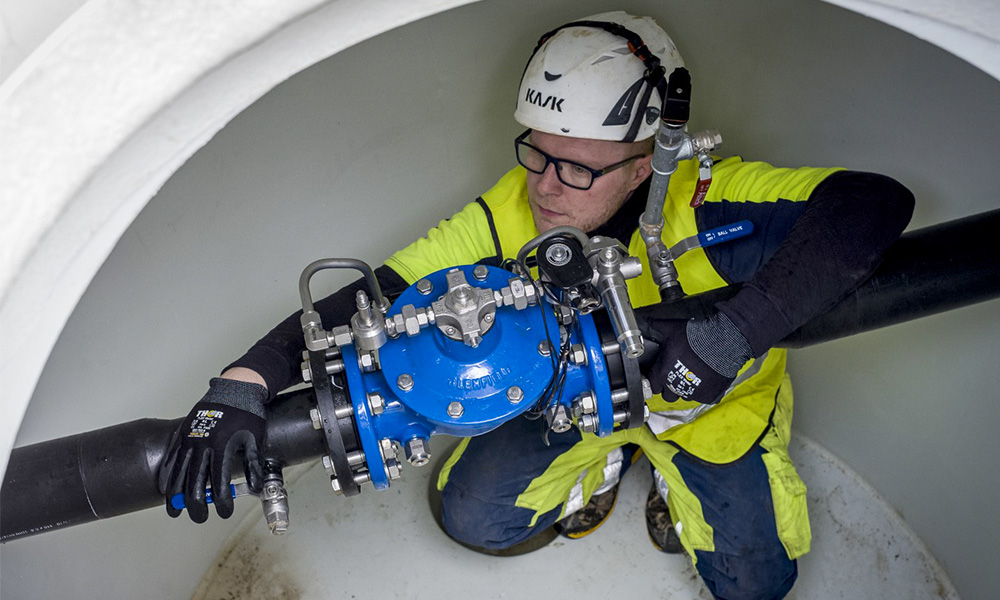
Optimising water pressure and reducing leakage with advanced smart valves in Klampenborg, Denmark
Credit: Hans Søndergaard – A look into one of the three monitoring chambers in Klampenborg. A Novafos staff member is inspecting the newly installed smart valve.
The DMA in Klampenborg, north of the Danish capital Copenhagen, is located along the coastline of the Oresund strait and is located in a low-lying area. Consequently, the pressure in the water mains is high as the water supply comes from sources located inland at a higher elevation.
Most (almost all) water supply networks are prone to leaks. Some are big and will typically be detected by the utility company staff or reported by customers. Some are minor and will never be spotted or repaired during the entire lifespan of the pipes. The difference in altitude and pressure means, that the DMA in Klampenborg will lose more water through leaks, compared to other areas situated at a higher altitude.
Therefore, advanced pressure control valves have been installed at two of the three inlets to the DMA. They optimise and stabilise the pressure and ensures that the setpoint is at a minimum. At the third entrance, a control valve has been installed and configured as a pressure sustaining control. The valve is closed during normal supply conditions, and automatically opens in case of unexpected pressure drops or emergencies.
Data from the flow meters in the DMA inlet enables the utility company to compare flow data with consumption data received from the customer smart meters. Thereby the utility can monitor the flow balance on a daily basis and thus calculate water losses at DMA level and thereby reduce the leak run times significantly.
With the new valves and knowledge about the operational and hydraulic behaviour of the DMA, the utility company has successfully reduced average pressure by 29 pct (from 46.7 mwc to 33.3 mwc). As a result, water is saved, as corresponding decreases in leakage level and burst frequencies are expected.
